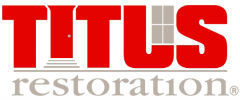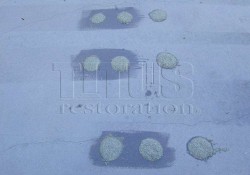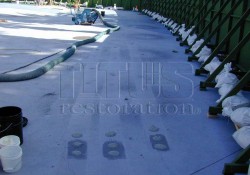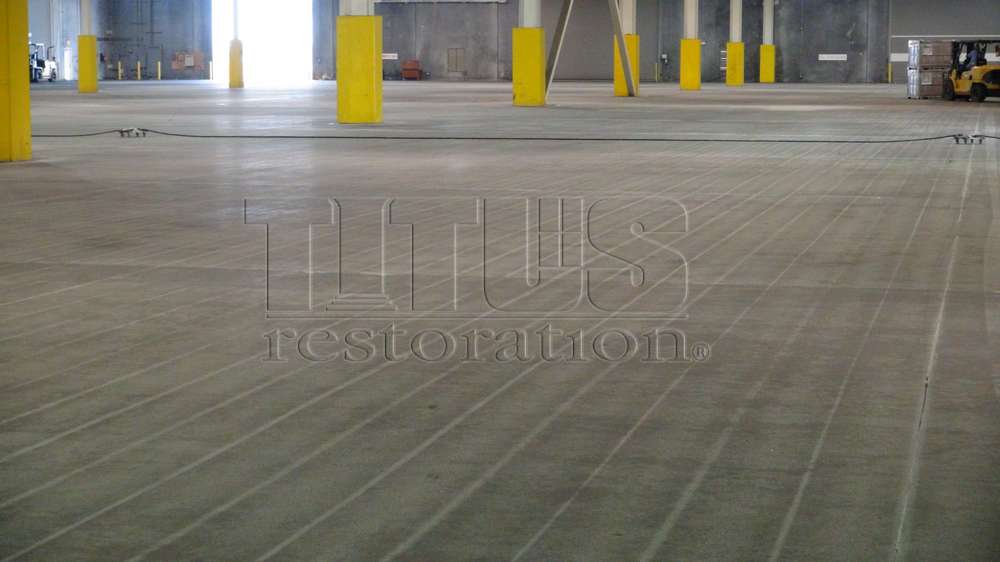Applying concrete floor paint first starts with a well-prepared surface. It doesn’t matter how much you pay for the concrete coating if surface prep is ignored. Here is an in-depth look at concrete surface preparation for floor paint.
Removing Contaminates
The first step in coating practically anything is to remove any contaminates. This includes things like dirt, rust, oil, chemicals, etc. How you remove these contaminates is important to the success of your floor coating project.
One thing you DO NOT want to do is to drive the contaminates further into the surface to be painted. So for example, with that in mind, sandblasting oily steel without first removing the oil would drive oil residue into the steel. While the steel may look like brightly blasted clean steel, it is not. The oil contamination driven into the steel may cause a paint failure. The exact same principal holds true for concrete floors, but to a greater extreme since concrete is porous and will more readily absorb contaminates.
Roughen the Surface
When concrete floors require painting there are several ways to perform the surface preparation. All of them involve removing any contaminates and then roughening the surface.
- Steel Shot Blasted Areas are Tested
- Testing is important before coating application
Blastrac® Steel Shot Blasting
Due to being a pioneer in steel shot blasting, the process is often simply referred to as Blastrac’d concrete. Steel shot blasting is probably the preferred method of surface preparation for concrete floor coatings because it can remove old paint or prepare a new surface for coatings. It is fast, efficient, and economical. The Blastrac® machines consists of two units. The first is the blast head that throws the steel shot onto the floor which creates an anchor profile in concrete to aid in coating adhesion. The second component is the large vacuum that captures the concrete dust, thus making this operation dust free and suitable for interior or exterior operations.
Some claim that this method of surface preparation fractures the concrete and causes coating failures. Since 1993, this writer has steel shot blasted and coated approximately 4 million square feet of concrete with ZERO percent of project failure due to complete delamination or fractured concrete.
One issue with steel shot blasting is that it leaves a “corn row” or “zebra striping” effect of 1” to 2” inches (wherever the blast pattern overlaps). This is due to double blasting of the overlapped area. Depending on the size of steel shot used, this could take 20 mils of coating to hide this corn row effect.
Acid Etching Concrete
Acid etching concrete to prepare it for coating is losing popularity. The acid eats away at the cement paste of the concrete and makes the surface weak. If looked at under a microscope, the top layer of the cement would look like a sponge. There have been paint and coating failures where it was not the paint or coating that gave away, but by looking at the back of the paint chip, there would be a fine layer of concrete. This is due to acid damaging the cement paste. Acid etching is seldom specified for thick coatings. Even acid stained concrete is known to have color walk-off due to the weakening of the cement paste.




